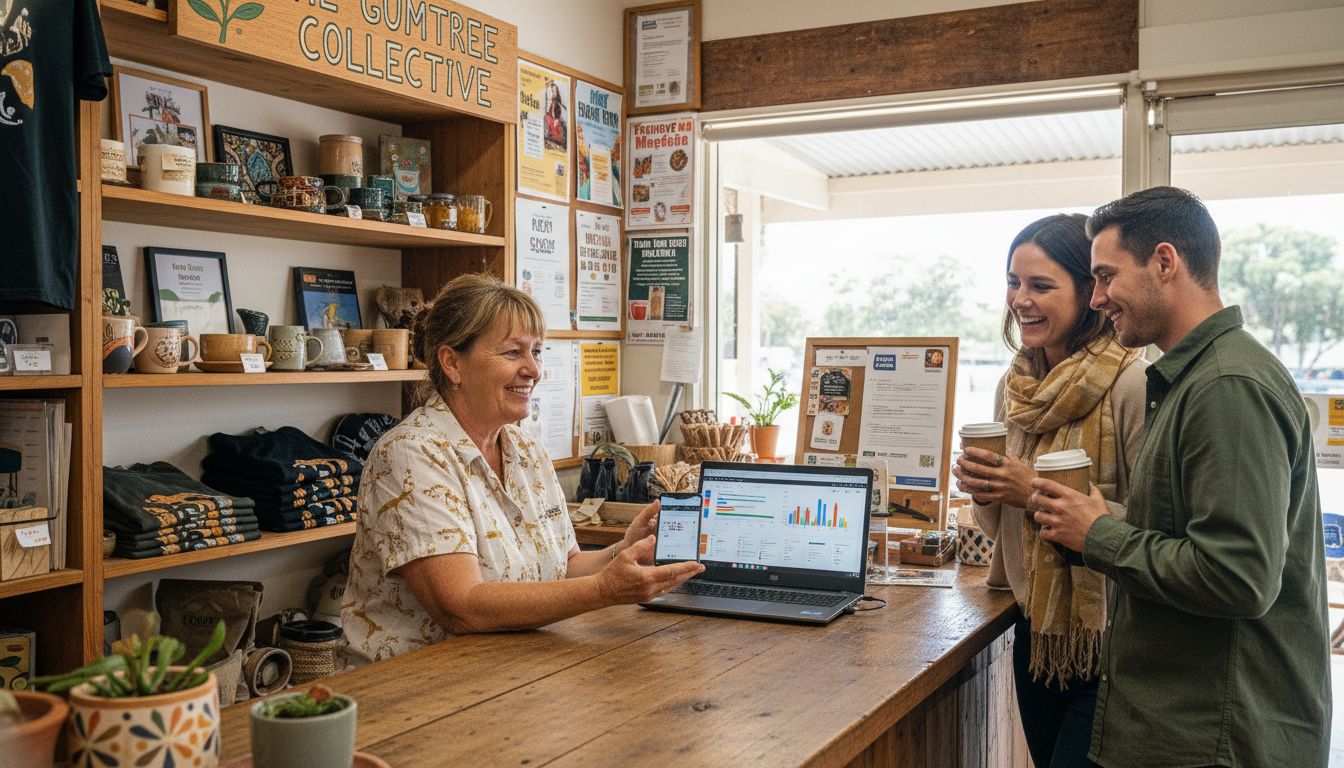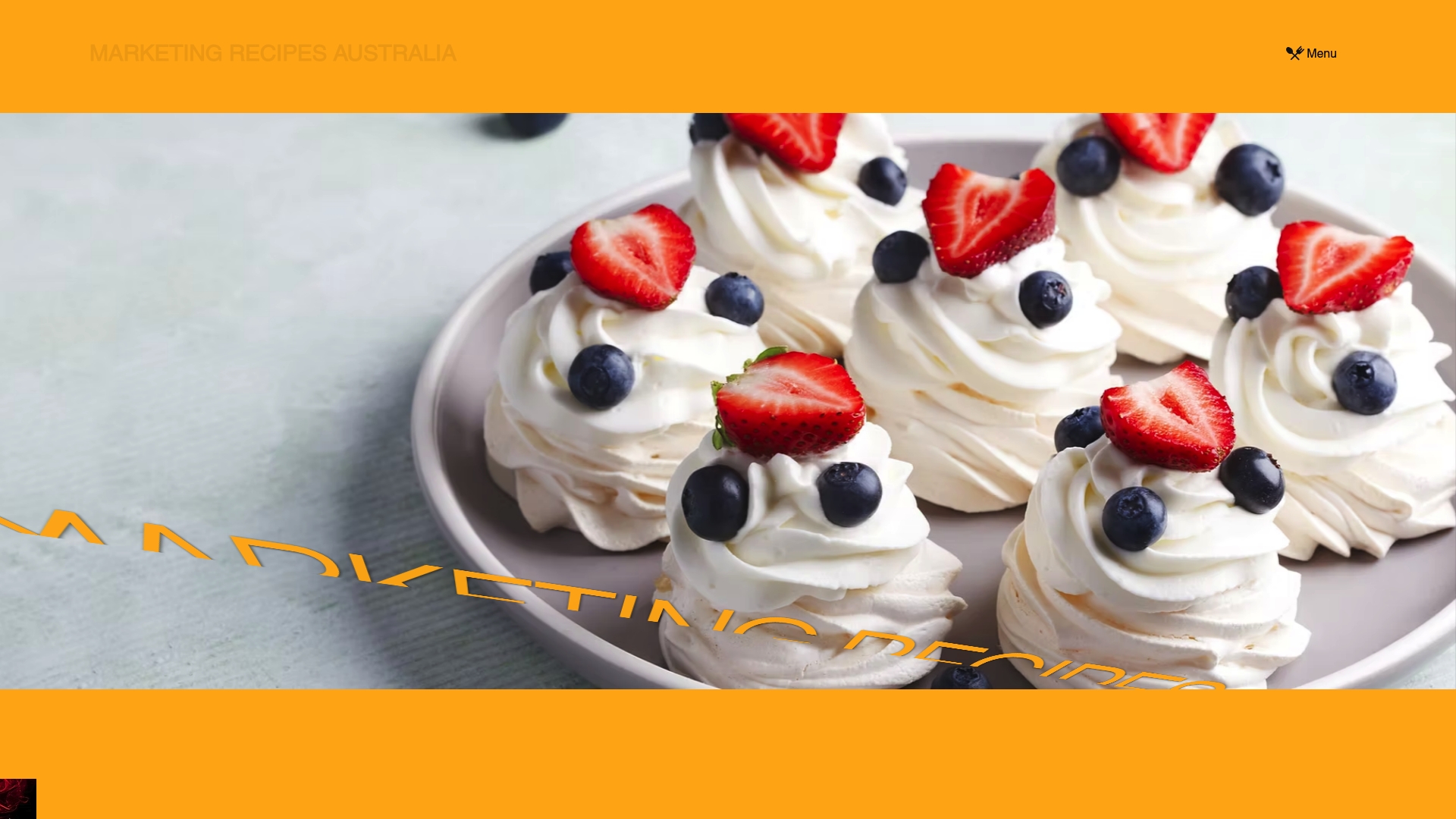Step by Step Social Media Strategy for Regional Business
- Eddie The Chef

- Oct 24
- 9 min read

Did you know that over 80% of regional Australian SMEs see real business growth with a clear social media strategy? Setting clear goals and understanding your audience can mean the difference between wasted effort and measurable results. When you match your message to the right people and platforms, you build trust and awareness that turns online visitors into loyal local customers.
Table of Contents
Quick Summary
Key Point | Explanation |
1. Define clear social media goals | Establish specific objectives like increasing followers by 20% in six months to guide your strategy effectively. |
2. Understand your target audience | Create detailed customer profiles that include demographics, interests, and preferred platforms to tailor your content. |
3. Choose the right platforms wisely | Focus on 2-3 social media platforms where your audience is most active to maximize engagement and resource effectiveness. |
4. Develop engaging content | Mix educational and promotional posts, aiming for 80% valuable content to build relationships and keep audiences interested. |
5. Monitor performance and refine approach | Regularly analyze KPIs to understand what resonates, allowing for strategic adjustments based on audience feedback and engagement. |
Step 1: Define social media goals and target audience
Creating a powerful social media strategy starts with pinpointing exactly what you want to achieve and who you want to reach. According to research from the University of South Australia, regional Australian SMEs can dramatically enhance their reach by defining specific goals and understanding their target audience.
Your first task is identifying clear business objectives for social media. These might include increasing brand awareness, generating leads, driving website traffic, or boosting customer engagement. Be specific. Instead of saying “I want more followers”, determine precise metrics like “increase Instagram followers by 20% in six months” or “generate 50 new customer inquiries through Facebook ads”.
Next, develop a detailed profile of your ideal customer. For regional businesses, this means going beyond basic demographics. Research from Business.gov.au suggests understanding not just age and location, but interests, online behaviors, and preferred social platforms.
Creating Your Audience Persona
Start by analyzing your current customer base. Ask questions like: What are their primary needs? What problems does my business solve for them? What social media platforms do they use most?
For example, a regional cafe might discover their primary audience is local professionals aged 25-45 who value quick, high quality coffee and use Instagram and LinkedIn frequently. This insight allows for targeted content and advertising strategies.
Pro Tip: Use free tools like Google Analytics and social media insights to gather precise data about your audience demographics and behaviors.
By combining clear goals with a deep understanding of your target audience, you create a solid foundation for your social media strategy.
This approach transforms social media from a random posting exercise into a strategic business growth tool.
In the next step, we will explore how to select the right social media platforms that match your audience and business objectives.
Step 2: Select optimal platforms for your business needs
Now that you understand your goals and audience, it is time to choose the social media platforms that will help you connect most effectively. According to the Australian Government Style Manual, different social media platforms serve unique purposes and selecting the right ones is critical for your marketing success.
Start by mapping your target audience to their preferred platforms. Business.gov.au recommends assessing where your potential customers are most active and engaged. For regional businesses, this might look different than in metropolitan areas.
Let us break down some platform options:
Here’s a quick comparison of major social media platforms for regional Australian businesses:
Platform | Best For | Target Demographic | Content Style |
Community engagement Local trust | Broad age groups Locals | Photos Updates | |
Visual storytelling | 18-45 Visual seekers | Images Short videos | |
B2B Professional networking | Professionals 35+ | Articles Tips | |
TikTok | Reaching younger audiences | Under 35 Trend followers | Short clips Humour |
YouTube | Tutorials Long-form content | All ages DIY audience | How-tos Demos |
Facebook: Ideal for community engagement and reaching a broad demographic. Works well for local businesses like cafes, trades services, and community organizations.
Instagram: Perfect for visual storytelling. Excellent for businesses with strong visual content such as restaurants, retail stores, and creative services.
LinkedIn: Best for professional networking and B2B services. Great for accounting firms, consulting businesses, and professional service providers.
TikTok: Emerging platform for reaching younger audiences. Suitable for businesses targeting under 35 age groups.
YouTube: Powerful for tutorial and explainer content. Works brilliantly for trades demonstrating skills or medical professionals sharing health information.
Pro Tip: Do not try to be on every platform. Quality trumps quantity. Choose 2 3 platforms where your audience is most active and focus your energy there.
Consider your resources and capacity. Creating engaging content takes time and skill. If you cannot consistently produce quality posts, it is better to focus on fewer platforms and do them well.
A regional automotive workshop might find Facebook and Instagram perfect for showcasing repair work and building local trust. A physiotherapy clinic could leverage LinkedIn for professional connections and Instagram for exercise tips.
In the next step, we will explore how to develop a content strategy that keeps your audience engaged and supports your business goals.
Step 3: Craft engaging content and posting schedule
With your platforms selected, it is time to develop content that captures your audience and keeps them coming back. According to Business.gov.au, creating engaging content involves understanding your audience’s interests and strategically planning your visual storytelling.
Start by developing a content mix that reflects your business personality. This means balancing educational, entertaining, and promotional posts. A good rule of thumb is the 80 20 principle: 80% valuable content that informs or entertains, and 20% direct promotional material.
Visual content is king in social media. The Australian Government Style Manual emphasizes using compelling visuals that match each platform’s characteristics. For a regional business, this might mean behind the scenes photos, customer testimonials, or short demonstrative videos showcasing your expertise.
Explore 7 effective examples of social media content for SMEs to get inspiration for your strategy. Consider content types like:
Customer success stories
Quick professional tips
Employee spotlight posts
Product or service demonstrations
Local community involvement snapshots
Pro Tip: Plan your content calendar at least one month in advance. This helps maintain consistency and reduces daily stress of content creation.
Consistent posting is crucial. For most regional businesses, aim for 3 5 posts per week. Quality matters more than quantity. A local plumber might share weekly maintenance tips, while a cafe could post daily specials and behind the scenes moments.

Track your post performance and be ready to adapt. What resonates with your audience might surprise you. Some posts will get more engagement than others and that is perfectly normal.
In the next step, we will discuss how to measure your social media strategy’s success and make data driven improvements.
Step 4: Execute campaigns and leverage local connections
Now is the time to transform your social media strategy into actionable campaigns that connect deeply with your local community. Research from the University of South Australia highlights that regional SMEs can build significant social capital by actively communicating and collaborating through online networks.
Start by identifying local events, seasonal activities, and community opportunities that align with your business. According to Rock Solid Marketing, regional Australian businesses can attract local audiences and tourists by promoting local events and demonstrating genuine community engagement.
Explore our guide on understanding regional marketing strategies to develop hyper local campaigns. Think creatively about connection points:
Partner with nearby businesses for cross promotional events
Sponsor local sports teams or community initiatives
Create content featuring local landmarks or regional stories
Highlight staff members who are active community participants
Share behind the scenes moments that showcase your local roots
Pro Tip: Authenticity matters more than polish. Local audiences appreciate genuine connection over polished corporate messaging.
Consider running targeted social media advertisements that speak directly to your local audience. Platforms like Facebook allow precise geographic targeting that can help you reach potential customers within specific regional areas.
Engagement is a two way street. Respond promptly to comments, share user generated content, and create opportunities for your community to interact with your brand. A local bakery might share customer photos or a tradesperson could offer quick maintenance tips that demonstrate expertise.
Remember that building local connections is about relationships not just transactions. Your social media should feel like a conversation with neighbours rather than a megaphone broadcasting sales messages.
In the next step, we will explore how to measure and optimize your social media performance to ensure continuous improvement.
Step 5: Monitor results and refine your approach
Tracking your social media performance is not just about collecting numbers its about understanding what truly resonates with your audience. According to Business.gov.au, regularly monitoring your social media channels allows you to respond promptly to customer interactions and assess the effectiveness of your content.
Start by identifying key performance indicators that matter for your business. These might include engagement rates, reach, website clicks, follower growth, or direct message inquiries. The Australian Government Style Manual recommends using social media monitoring tools to track conversations and understand public sentiment.
Most social media platforms offer built in analytics that provide insights into your performance:
Facebook Insights
Instagram Analytics
LinkedIn Page Analytics
Twitter Analytics
Pro Tip: Set up monthly review sessions where you analyze your data and discuss potential strategy adjustments with your team.
Pay attention to which types of content generate the most engagement. A post about a local community event might get more shares than a direct product advertisement. A behind the scenes video could generate more comments than a standard promotional image.
Dont be afraid to experiment. If a particular content style or posting time generates better results, lean into that approach. Social media is dynamic and what works today might change tomorrow.
Consider the qualitative feedback as much as the quantitative data. Comments customer messages and direct feedback can provide nuanced insights that raw numbers cannot capture.
Remember that refinement is an ongoing process. Your social media strategy should be a living document that evolves with your business and audience needs.
Unlock Your Regional Business Potential with Expert Social Media Strategies
Struggling to define clear social media goals or understand your local audience? You are not alone. Many regional businesses face the challenge of turning social platforms into effective growth tools while juggling limited time and resources. This article lays out the essential steps to create a tailored strategy that genuinely connects with your community through the right platforms, engaging content, and authentic campaigns.

At Marketing Recipes Australia, we understand the unique needs of regional businesses and offer a complete “kitchen-inspired” menu of services to elevate your digital presence. From strategic social media management and eye-catching video marketing to personalized content creation and web design, our affordable solutions focus on building trust and local connections that matter. Don’t let your social media efforts be a random posting exercise. Act now to transform your online channels into powerful growth engines. Explore how our expertise can help you craft and execute your social media strategy by visiting Marketing Recipes Australia and discover tailored options to suit your business goals and community. Take the first step toward meaningful engagement and measurable results today.
Frequently Asked Questions
What are the first steps to creating a social media strategy for my regional business?
Creating a social media strategy begins with defining your specific business goals and understanding your target audience. Identify clear objectives, such as increasing engagement by 20% over the next six months, and create an audience profile based on their interests and online behaviors.
How can I choose the right social media platforms for my business?
Select social media platforms by mapping them to your audience’s preferences. Focus on 2-3 platforms where your target audience is most active, like using Facebook for community engagement and Instagram for visual content to improve reach.
What types of content should I post on social media?
Aim for a mix of educational, entertaining, and promotional content, following the 80/20 rule—80% value-added posts and 20% promotion. For example, you could share weekly maintenance tips and customer success stories while occasionally promoting your services.
How often should I post on social media?
For regional businesses, aim to post consistently at least 3-5 times per week. This keeps your audience engaged and increases visibility; for instance, a local cafe could share daily specials and behind-the-scenes content to maintain interest.
How do I measure the success of my social media efforts?
Measure success by tracking key performance indicators like engagement rates, follower growth, and website clicks. Set up monthly reviews to analyze this data and refine your approach based on which posts resonate most with your audience.
What can I do to better engage with my local community on social media?
Engage with your local community by actively promoting local events, partnering with nearby businesses, and featuring community stories. For instance, consider sharing user-generated content or sponsoring local events to demonstrate genuine involvement in your area.
Recommended
Comments